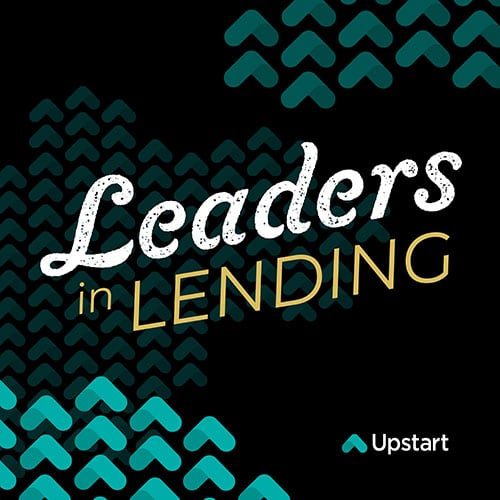Leaders in Lending | Ep. 47
Unlocking Financial Freedom for All: Pioneering an Ecosystem of Connected Financial Solutions
On this episode of Leaders in Lending, Raja Chakravorti, Partnerships Lead, Universal Access at Plaid joins the show to talk about what the imminent future of fintech will look like and how it will foster financial well being for consumers across the globe.


GUEST SPEAKER
Raja Chakravorti

ABOUT
Plaid
Key Topics Covered
- How Plaid is unlocking financial freedom for all
- The evolution of open finance and open banking
- How banks benefit from a multi-directional flow of financial data
- The shift from data as the advantage to using data to improve the customer/member experience

"Consumers’ information sits in all aspects of the ether and should be able to go bi directionally, and innovation should be able to happen across all of that data spectrum."

“Enabling what consumers want is going to be the North Star that drives everything.”

“We're going to move towards this world of connected, interoperable financial solutioning, where all of this stuff, even if it's provided by different providers, should be viewable and operational via one specific place.”
EPISODE RECAP & SUMMARY
Plaid is paving the way to an interconnected financial future.
The aim?
Connecting thousands of consumers and financial institutions to the thousands of fintech applications in existence in order to create an integrated ecosystem that benefits everyone.
On this episode of Leaders in Lending, Raja Chakravorti, Head of Financial Access at Plaid joins the show to talk about what the imminent future of fintech will look like and how it will foster financial well being for consumers across the globe.
We’ll touch on…
- How Plaid is unlocking financial freedom for all
- The evolution of open finance and open banking
- How banks benefit from a multi-directional flow of financial data
- The shift from data as the advantage to using data to improve the customer/member experience
Mass fintech adoption
Last quarter, Plaid conducted and published a report called the fintech effect that measured trends in consumer financial behaviors.
Results confirmed that there has indeed been a mass acceleration of fintech usage and that consumers are developing digital behaviors that allow them to independently maintain their financial wealth, despite the fact that bank branches are beginning to reopen.
According to Chakravorti, “the number of US consumers using fintech grew 30 points last year from 58% to 88%, which is higher than the number of people using social media or video streaming services.”
APIs
Since Plaid’s fundamental mission is to democratize financial services through technology, they wanted to make their product accessible.
Built through APIs, Plaid is designed to function as a developer-friendly platform, which is the reason it’s able to connect over 12,000 financial institutions to 5,500 digital financial services.
Open Finance
Plaid is founded on a concept called Open Finance—a model that allows consumers to privately own and share their alternative financial data with third parties.
By allowing their users to securely and seamlessly manage their money across financial institutions, apps and services, Plaid empowered people to take control of their assets and nurture healthier financial lives.
The overwhelming movement toward an open finance world is forcing financial institutions to see that the boundless flows of data aren’t as menacing as they seem.
Rather than removing an institution’s proprietary competitive edge, Plaid is enabling multi-directional connectivity—one that can illustrate a holistic picture of a consumer’s financial history.
Dodd-Frank
As Plaid continues to grow over time, their relationship with financial institutions has changed as well.
In 2012, the Dodd-Frank Act—a consumer protection act that essentially enabled an open banking system—furthered the acceptance of a multi-channel flow of data in the finance world.
Now that strides are being taken by the CFPB and Biden Administration to cement Dodd-Frank into law, it’s removing the friction between financial institutions and the ever-growing fintech data ecosystem.
The bigger question that remains is how do banks and fintech aggregate and leverage the collective data effectively?
Plaid has been dedicated to working with their bank partners to build out new digital infrastructures to enable data-sharing.
As banks continue investing in their digital assets and designing an experience that connects their consumers to what they want, fintechs like Plaid can equip their clients with the tools needed to provide customers with the best possible experience.
However, not every bank has the right amount of capital or resources required to fully integrate their systems.
Still, the key is to participate in small ways, even if it’s just to give consumers access to the apps they love.
According to Chakravorti, “about 70% of consumers, if they were not able to connect to the fintech apps they wanted to use, might actually take an action to migrate their underlying financial institution.”
Alternative underwriting
So what’s the benefit of an open data ecosystem?
With access to an unlimited amount of traditional and non-traditional consumer financial data, it shortens the verification cycle while also increasing approvals.
In the United States alone, there are 45 million people that are underserved by traditional financial institutions because solutions haven’t been built for their inclusion.
Fintechs have created a way for these populations to access aid by pooling alternative data sources to more accurately and fairly measure the risk of an individual.
For instance, FICO scores are a typically decent classification of whether or not someone can finance a loan, however, immigrant consumers without a recorded financial history in the US are systematically disadvantaged by these tests.
So does this mean that these populations are unworthy of a product that, according to Chakravorti, will be “hyper-curated to the user” anyway?
Fintechs believe—absolutely not.
The key has been in accumulating the data sources that positively impact those accounts and influencing traditional banks to reconsider their actual risk.
Universal data access and credit trends
With more universal access to data, there’s been a shift in how institutions take advantage of it.
In the case of third-party lenders, leveraging an ecosystem of free-flowing financial data allows them to expedite the typically exhaustive, error-susceptible, fragmented process of auditing each consumer’s finances and creditworthiness.
Future projects
The onboarding experience is something Plaid has focused their efforts on.
The three areas—account connectivity, account funding, and authentication—are fundamental pieces of a positive and effective onboarding function.
Plaid developed these pieces as a means to empower data security, transparency, and consumer control.
Stay tuned for new episodes every week on the Leaders in Lending Podcast.




